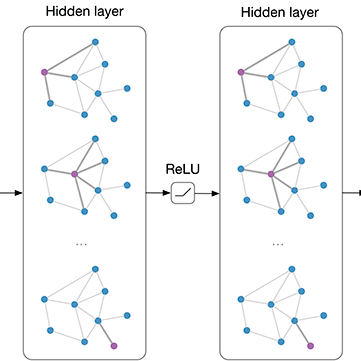Label Propagation (LPA) and Graph Convolutional Neural Networks (GCN) are both message passing algorithms on graphs. Both solve the task of node classification but LPA propagates node label information across the edges of the graph, while GCN propagates and transforms node feature information. However, while conceptually similar, theoretical relation between LPA and GCN has not yet been investigated. Here we study the relationship between LPA and GCN in terms of two aspects: (1) feature/label smoothing where we analyze how the feature/label of one node is spread over its neighbors; And, (2) feature/label influence of how much the initial feature/label of one node influences the final feature/label of another node. Based on our theoretical analysis, we propose an end-to-end model that unifies GCN and LPA for node classification. In our unified model, edge weights are learnable, and the LPA serves as regularization to assist the GCN in learning proper edge weights that lead to improved classification performance. Our model can also be seen as learning attention weights based on node labels, which is more task-oriented than existing feature-based attention models. In a number of experiments on real-world graphs, our model shows superiority over state-of-the-art GCN-based methods in terms of node classification accuracy.
翻译:Label Propagation (LPA) 和 Grab Convolutional Neal Network (GCN) 两者都是图表上的传递算法。 两者都解决了节点分类的任务, 但LPA在图形的边缘传播节点标签信息, 而GCN则传播和转换节点特征信息。 然而,虽然在概念上相似的情况下, LPA 和 GCN 之间的理论关系尚未调查。 我们在这里研究LPA 和 GCN 在两个方面的关系:(1) 我们分析一个节点的特征/ 标签如何传播到其邻居; (2) 一个节点的初始特征/ 标签在多大程度上影响另一个节点的最后特征/ 标签。 根据我们的理论分析, 我们提出了一个端对端到端模型, 将 GCN 和 LPA 统一为节点分类。 在我们的统一模型中, 边缘重量是可以学习的, 并且基于 LPA 的调整, 帮助GCN 学习导致改进分类绩效的适当边缘重量。 我们的模型也可以被看作是一个基于不光谱的精确度的注意度 模型, 在不光谱标签上显示我们当前G- prealidealmode rogradumodalaltidude 的模型中, ex- portidudududududustralmode ex ex ex ex




